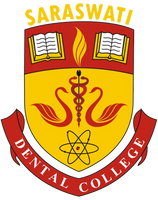


INTRODUCTION-Digital smile designing (DSD) is a conceptual tool that facilitates esthetic planning and improves communications between the clinician and patient regarding the predictability of the treatment.
It allows for a thorough analysis of the patient's facial and dental characteristics, as well as any potential issues that may be identified during clinical examination, photography, digital impression, or diagnostic cast evaluation procedure.
A Commercially available DSD software include CEREC Smile Design (SIRONA), Digital Smile System (DSS), Smile Design Pro (TASTY TECH), G Design (HACK DENTAL), Romexis Smile Design (PLANMECA), and Smile Composer (3 SHAPE).
DSD Workflow
The DSD workflow begins with digital scanning of the patient’s dentition using an intraoral scanner, which is then imported to the respective DSD software.
Using the various different shapes and forms available in the digital repository, we can overlap the teeth for a given esthetic procedure.After facial photographs uploaded, two baselines are drawn on the center of the slide so that it forms a + sign and the three facial lines are grouped together to analyze the relationship between the lips, gingiva, and teeth.
2. Soft tissue features (gingiva, lips, facial lines) and their association with other components are evaluated by grouping and transferring them to the facial photograph.
3. A template tooth that is set to be standard and exact in dimensions is placed over the original photograph so that axial inclinations, proportion in relation to adjacent teeth, and soft tissue silhouette are established. The retracted view is engaged in order to evaluate whether the intraoral photograph is concurrent with facial baseline data, where three lines are drawn
Line 1: Intercanine width measured from the tip
Line 2: The middle third of the central incisor to the occlusal edge of the adjacent central incisor.
Line 3: From the philtrum of the upper lip to the interdental papilla and the incisal embrasure.
A template tooth is placed over the original photograph so that relationships are established and drawing the three reference lines that will allow to evaluate whether the intraoral photograph is concurrent with facial baseline data.
4. Rectangular crop mode is then chosen and placed over the region of both central incisors to measure the width/length proportion of the central incisors A rectangle guide representing the ideal tooth proportion is placed over the, teeth thereby comparing the preoperative proportion to the ideal one.
5. Using editing tools, the template tooth can be placed over the photographed tooth, and pasted and morphed according to the best esthetic outcome. The patient’s preferences and inputs can also be gathered and included during this stepUsing editing tools Final teeth outline showing the relationship between the preoperative situation and the ideal design is done.
6. A digital ruler available in the software can be used to calibrate the real-time dimensions of the tooth by recording the measurement on the 3D model and then incorporating it into the software. Gingival contour and the proportion to attached gingiva width and incisal edges can also be calibrated A digital ruler is used to evaluate the esthetic adjustments needed to be done (i.e., crown lengthening, margin placements in the veneers).
7. Transferring the + sign to the cast: The measurement of baseline point till the free gingival margin is recorded and then transferred to the 3D cast with the aid of a caliper. Horizontal lines above the teeth which predict the gingival margin are marked on the cast using a pencil mark. The vertical lines are then marked using the interval between the incisal embrasures along with the facial component, which is then marked in the 3D model. The reference lines measured through the ruler are then transferred onto a cast with precision using a caliper device.
8. Wax up of the procedure to be performed for establishing a smile and then carried out on the cast and evaluated using DSD, after which it is tried on the patient.
9. Once the approval of the wax up has been sought, minor corrections, if deemed necessary, are performed.
10. Minimal intervention should be prioritized such as minimal reduction of tooth surfaces, and giving proper clearance for crowns, if requiredMinimal dental procedure that has been done and Postoperative redesigned smile.
Conclusion
The DSD is an innovative tool that helps the clinician to create esthetically pleasing smiles. Previsualization drastically increases the patient’s acceptance rate. The technology also makes the patient a part of the decision-making process by including their preferences. Although caution should be exercised that ideal case selection is always necessary in order to have a successful outcome.


No Any Replies to “DIGITAL DENTAL SMILE DESIGNING”
Leave a Reply